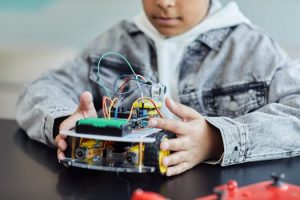Ancestral Design Techniques Reimagined Through AI
Design has always been a fundamental aspect of human society, serving as a means of creative expression and cultural representation. For centuries, various techniques and methods have been developed by our ancestors to create stunning designs on various mediums, such as pottery, textiles, and architecture. But what if we could combine these ancestral design techniques with the power of artificial intelligence (AI)? The result would be a fascinating blend of tradition and innovation, where age-old techniques are reimagined and given new life. Let’s explore the world of ancestral design techniques and how AI is transforming them in unprecedented ways.
The Evolution of Ancestral Design Techniques
Design techniques have existed since the dawn of human civilization, with evidence of intricate designs found on ancient artifacts and structures. These techniques were developed by our ancestors to not only beautify functional objects but also to communicate cultural beliefs and traditions. Some of the earliest known ancestral design techniques include embroidery, weaving, and ceramics, which were used to create elaborate patterns and motifs that reflected the values and customs of their respective societies.
As society progressed, so did design techniques. The Industrial Revolution marked a major shift in the way designs were created, with the invention of machinery and mass production techniques making it easier to replicate intricate designs on a larger scale. However, this also meant that the personal touch and unique qualities of ancestral design techniques were gradually lost.
The Rise of AI in Design
The emergence of AI has revolutionized the world of design, offering endless possibilities for innovation and creativity. AI systems are capable of learning and adapting, making them well-suited for tasks such as design. With the use of algorithms and machine learning, AI can analyze vast amounts of data and generate unique, intricate designs in a matter of seconds.
A common misconception about AI is that it is meant to replace human creativity. However, in the context of design, AI is not a substitute but rather a tool that can enhance and complement human skills. By using AI, designers can push the boundaries of what is possible and create designs that would have been nearly impossible to conceive manually.
Reimagining Ancestral Design Techniques Through AI
Combining ancestral design techniques with AI has resulted in some truly fascinating projects. One such example is the work of designer and researcher Philipp Ronnenberg, who used AI algorithms to create new garments inspired by traditional African textiles. By analyzing hundreds of images of African textiles, the AI system generated a new design that incorporated elements of traditional designs while still maintaining a modern aesthetic.
In another project, artist and engineer Ahmed Elgammal created an AI system that was trained on images of ancient Greek pottery. The system then generated new designs that were inspired by the style and motifs of the ancient pottery, resulting in a unique blend of tradition and modernity.
The Future of Design with AI
The use of AI in design has opened up new possibilities and opportunities for creativity. As technology continues to advance, we can only imagine the incredible designs that will emerge through the fusion of ancestral design techniques and AI.
However, it is also important to remember the cultural significance and value of ancestral design techniques. AI should not be used to replace or overshadow these techniques, but rather to preserve and celebrate them in a new light. By embracing both tradition and innovation, we can create a more diverse and vibrant design landscape for future generations to come.
In Conclusion
Ancestral design techniques are a fundamental part of our cultural heritage, representing the creativity and craftsmanship of our ancestors. With the introduction of AI, these techniques are being reimagined and given new life, offering a unique blend of tradition and innovation. As we continue to explore the possibilities of AI in design, let us not forget the rich history and cultural significance of the ancestral techniques that have paved the way for this exciting new era of design.











